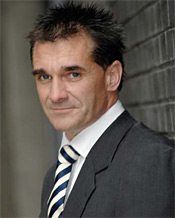
 |
The capital is running out of data hosting capacity and firms must start planning now or face the consequences, argues Peter Knight of Adapt
Life couldn’t seem brighter for companies that supply bandwidth, network services and co-location capacity to London’s businesses, residents and visitors. Web 2.0 technologies are driving a second wave of innovation and introducing an array of rich online applications that are being hungrily adopted by both businesses and a net-savvy public that has become used to broadband, always on connectivity. Conducting business and personal transactions over the web has become second nature to all but the most unreconstructed Luddite.
The original vision of a pervasive, high-speed Internet-enabling secure, rich communication has come true and, in doing so, has become a critical part of all our business and personal lifestyles. What could possibly threaten this triumph
of technology?
The simple answer is that London is rapidly running out of the co-location facilities that support and enable so much of the overlaid network. Some commentators have gone as far as to predict a 0% vacancy rate by 2009. When online services started to take off in the midnineties, carriers began to design and build the data centres that underpin the communications network. However, over the past decade soaring demand and a phenomenal increase in processing power is stretching capacity to its limits. Jed Scaramella of IDC states that between 1996 and 2006, the number of servers in use went from 6m to 28m and the average power consumption of each server grew from 150 watts to 400 watts.
Physical space is at a premium not only because of the number of servers required but also because each server needs to incorporate ever more powerful cooling systems. The new currency is not about how many racks can be accommodated. Today, negotiations are all founded on power and cooling requirements - in fact IDC has estimated that by 2007 spending on data centre power and cooling will match global spending on new servers and Gartner analyst Michael Bell believes that power and cooling will be a top 3 issue with all CIOs in the next 6-12 months.
The stark reality is that this massive drain on the local grid will soon become unsupportable. By 2009, London faces the prospect of regular ‘brownouts’ - reductions in electric power - much like California did at the beginning of the decade. Factor in colossal construction projects, such as the Olympics and CrossRail, which will add to the burden on the power and network infrastructure, and the picture becomes bleaker.
The IT industry - and carriers specifically - need to begin planning now to cope with these demands. Further impetus has been provided by a recent report from the Broadband Stakeholder Group which states that telecoms firms must build faster networks within two years or risk suffering profound social and economic setbacks. With demands for 100mbps bandwidth to the home as standard, pressures on co-location facilities will increase exponentially.
Perhaps the more sensible approach is for chip manufacturers to focus on efficiency rather than processing power. Recently, major players including AMD, Dell, HP, IBM, Intel, Microsoft and Sun, formed a ‘Green Grid’ coalition which aims to cut data-centre power usage.
New ‘multi-core’ processor chips integrate several processors rather than ramping up clock speed. Dual-core chips have become commonplace, and are being followed by quadcore chips, pioneered by Intel and AMD. Combine these with advances in power supply and cooling technology, and the industry should be able to squeeze more servers into the same space without the associated burden on power. There is another alternative route for companies to take. Working with one of the new breed of Virtual Network Operators (VNOs) can have a number of benefits - particularly when space is at a premium. Unlike traditional network operators, VNOs have an in-depth knowledge of what is going on in the industry, enabling them to advise customers on the various options to suit their requirements. Using the assets of multiple carriers, they are free to advise on the most suitable network and technology partners, delivering the best choice for each customer depending on their unique requirements.
This means that they have the buying power to ensure competitive rates - important when we consider how prices have risen in the past 18 months - as well as access to a number of different suppliers. For example, Adapt is working with a new data-centre being built in Woking and has already secured 350m2 to come on stream in September. This gives our customers costeffective access to valuable co-location space within 40 miles of London at a price they could never have negotiated as a sole trader.
However the industry addresses the problem, it is heartening that companies are waking up to one of the most critical issues facing modern business - and indeed the environment. The alternative is to condemn London and other major business centres to an uncertain future and the real risk of power failure - and business disruption - on an unprecedented scale.
